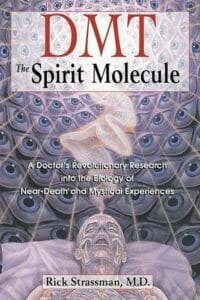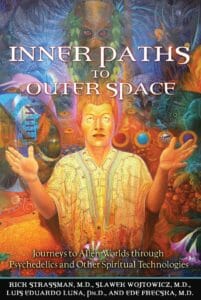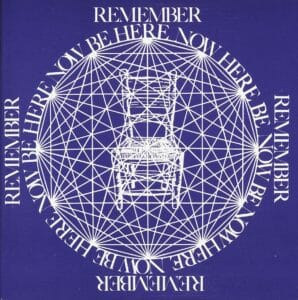In this episode of Psychedelics Today, Kyle and Joe provide a basic introduction to the field of Transpersonal Psychology and a brief overview of Stanislav Grof’s theories and work, including the Basic Perinatal Matrices.
What is Transpersonal Psychology?
The following excerpt is taken from Kyle’s undergraduate capstone project paper, “The Psychology of Extraordinary Experiences.”
The word transpersonal can be defined as “beyond one’s self or ego.” The catalyst for the re-emergence of this field was fueled by heady days of the 1960’s which included social change, self-exploration, and a radical shift in consciousness.
What exactly is the field of transpersonal psychology and psychiatry that was developed out of the events of the late 1960s? The Textbook of Transpersonal Psychiatry and Psychology defines these terms as follows:
Transpersonal psychiatry, therefore, is psychiatry that seeks to foster development, correct developmental arrests, and heal traumas at all levels of development, including transpersonal levels. It extends the standard biopsychosocial model of psychiatry to a biopsychosocial-spiritual one in which the later stages of human development are concerned with development beyond, or transcendent of, the individual….Transpersonal psychiatry and psychology address that universal aspect of human consciousness that is transpersonal experience and do not propound the belief of any one religion. (Scotton, 1996, p. 4-5)
Ultimately, transpersonal psychology allows the ability to view different cultural perspectives about reality. This can be achieved by observing and understanding various cultural beliefs as being a valid representation of that specific culture’s known reality (Scotton, 1996).
Transpersonal psychiatry allows not only that other vantage points (other societies) construct equally valid realities, but also that reality can be constructed in more positive directions with adequate techniques and personal development. (Scotton, 1996, p. 6)
The word transpersonal was first coined and used by William James in a lecture in 1905 (Chinen, 1996). During the mid-1960s a group of humanistic psychologists got together on behalf of Anthony Sutich, a pioneer in the field of transpersonal psychology, and the founding editor of the Journal of Humanistic Psychology. The meetings were held at Sutich’s home in California and consisted of topics that were of concern and dealt with issues that were known as transhumanistic, meaning beyond humanistic psychology (Chinen, 1996). Abraham Maslow was one of the main guiding participants for these meetings, and also a pioneer at the time for his theory of peak experiences. Peak experiences dealt with experiences that an individual might have that brings a sense of clarity or awakening to the person’s life. Stanislav Grof suggested the use of the term transpersonal at one of the meetings with Sutich, Maslow and the Austrian psychiatrist, Victor Frankl, for the newly emerging field of psychology soon to be known as the fourth force, or transpersonal psychology (Chinen, 1996). The meetings at Sutich’s house finally led to the announcement of the new field of transpersonal psychology in 1968, which separated itself from the humanistic approach of psychology (Chinen, 1996). The purpose of this new branch of psychology was to explore non-ordinary states of consciousness and spirituality.
Sutich is held accountable for the following original mission statement that is in the first issue of the Journal of Transpersonal Psychology:
The Journal of Transpersonal Psychology is concerned with the publication of theoretical and applied research, original contributions, empirical papers, articles and studies in meta-needs, ultimate values, unitive consciousness, peak experience, ecstasy, mystical experience, B-values, essence, bliss, awe, wonder, self-actualization, ultimate meaning, transcendence of the self, spirit, sacralization of everyday life, oneness, cosmic awareness, cosmic play, individual and species wide synergy, maximal interpersonal encounter, transcendental phenomena; maximal sensory awareness, responsiveness and expression; and related concepts, experiences and activities. As a statement of purpose, this formulation is to be understood as subject to optional individual or group interpretations, either wholly or in part, with regard to the acceptance of its content as essentially naturalistic, theistic, supernaturalistic, or any other designated classification. (Chinen, 1996, p. 10-11)
Basically, there are three points to this mission statement. The first is to have a focus on concerning issues that deal with experiences that are traditionally classified as mystical or religious. Second, there must be emphasizes on the use of empirical and scientific studies to help understand said experiences. And third, they seek to hold and suspend any beliefs regarding whether said experiences or phenomena are to be classified or dismissed as supernatural or not (Chinen, 1996).
References:
Chinen, A. B. (1996). The emergence of transpersonal psychiatry. In B. W. Scotton, A. B. Chinen, & J. R. Battista (Eds.), Textbook of transpersonal psychiatry and psychology (pp. 9-18). New York, NY, US: Basic Books.
Scotton, Bruce. (1996). Introduction and definition of transpersonal psychiatry. Scotton, Bruce W., & Chinen, Allen B., & Battista, John R. (Eds.), Textbook of transpersonal psychiatry and psychology (pp. 3-18). New York, NY: Basic Books.
Links and Resources
Books Mentioned (These links are Amazon Affiliate links. Psychedelics Today receives a small commission at no charge to you)
- The Tibetan Book of Living and Dying: The Spiritual Classic & International Bestseller
- Textbook Of Transpersonal Psychiatry And Psychology
- Pathways to Wholeness: Archetypal Astrology and the Transpersonal Journey
Other Resources
- Esalen Institute
- The Stephen Hawking of Psychology: Anthony “Tony” Sutich
- A Brief History of Transpersonal Psychology – Stan Grof
- Abraham Maslow
Lenny Gibson – A brief history of psychedelics in the Western world






